Have you ever wished your garden plants were more like Pokémon – super adorable, with all the evolution, but without all the battles? Have you ever wished those lovable creatures were named and described by the most delightful dad jokes imaginable? Have you ever wanted to control (some of) the weather, while still shaking your fist at the skies for the weather that upsets your fair designs?
Then Plantopia just might be the game for you.
In Plantopia, Origame brings the artwork of @daylightpotato to life through a card game of horticultural proportions. Two to five hopeful gardeners set out to cultivate their plots by planting, growing, and evolving their puntastic herbage in a delightful strategic race. Along the way, players attempt to predict and influence the weather in order to achieve their goals. In the end, Plantopia is a game of tree-cognition and cactics.
Setup & Gameplay
The aim of the game is to harvest the most magical rainbow leaves from a garden of quippy plants before any one player introduces their fourth treevolved species to their garden. Additional endgame scoring bonuses will lend a hand in achieving total victory.
At the outset, Players shuffle the 102 plant cards and deal 6 to each gardener. Each player also receives 5 garden plot cards where the magic will (hopefully) take place. Finally, each player selects a character and receives matching weather and power cards.

Gameplay is simultaneous and takes place in two repeating phases:
The Planting Phase
After spending an appropriate amount of time appreciating the delightful artwork and corny wordplay in hand, each player will choose one of three actions:
- Plant a card from the hand into the garden, paying the required cost
- Grow plants in the garden by discarding unsuspecting plants from the hand
- Draw five cards, keeping 2 and discarding the others
The real decision-making comes early and often in choosing which plants to employ and how best to combo their abilities. Baby plants are cheap (sometimes free) and easy to place, and often provide instant benefits. Treevolved plants require the sacrifice of baby plants of a certain age (it sounds morbid when I say it like that), but typically come with lucrative endgame scoring opportunities. Each plant type – flowers, trees, and cacti – raises particular strategic advantages.
Reaching the necessary growth levels to plant more sophisticated greenery might require foregoing planting in favor of forceful fertilized growth or card collecting in order to pay the hefty costs. There is no shortage of rapid tactical thinking in the Planting phase.
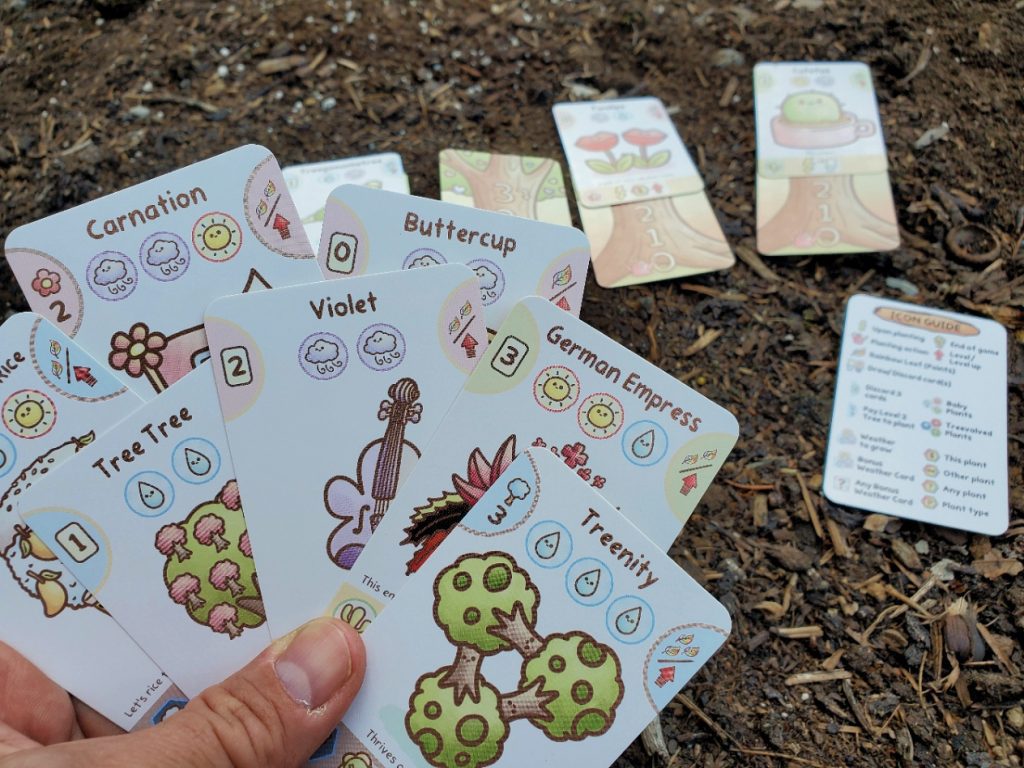
The Weather Phase
Once all players have carried out their actions, the mind games begin in the weather phase. Each plant card contains a growth condition – a combination of weather conditions that will spur automatic growth, furthering the Plantopian dream.
Players will each choose one weather condition – sun, wind, or rain – to provide for that phase. In lower player-count games, a supplementary weather deck adds randomized assistance. Having looked over the plots around the table, each gardener must try, in secret, to decipher the choices of their opponents so as to predict and create the ideal combinations and the greatest returns. Players then reveal their decisions to much rejoicing… or frustration.
Based on the revealed weather, plant growth is adjusted according to the cards’ growth conditions and the process begins again. Plants that reach the third level are removed from their plots and stored below, though they still remain active for scoring magical leaves in the endgame, or as accessible sacrifices in the treevolution process.
The endgame triggers when any one player introduces a fourth treevolved plant to their garden complex, leaving only one last, tense weather phase to make final gains before scoring.
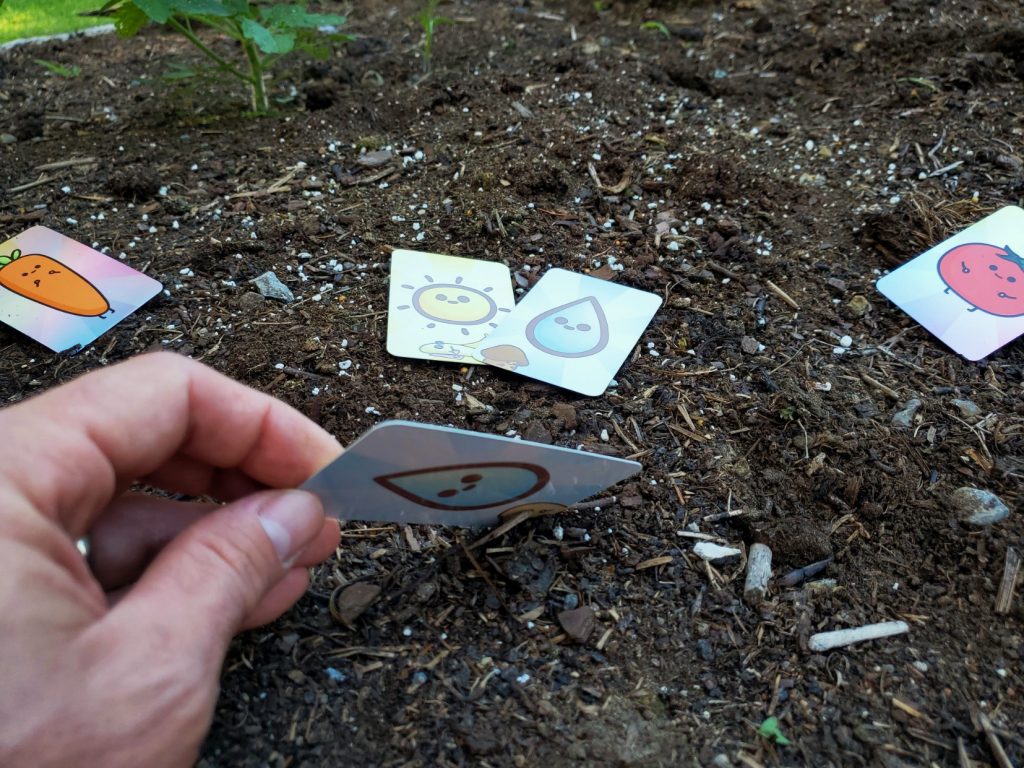
Scoring
At the harvest, magical rainbow leaves are counted by multiplying the number of leaves on the card by the growth level achieved by the plant. This means a plant that failed to grow up from Level Zero contributes no leaves, while a plant which reached its full potential at Level three (stored below the garden plots) triples the number on the card.
Endgame scoring conditions – detailed on the cards – are also tallied after a few moments of symbolic translation before the final scores are calculated. The gardener with the most impressive score wins.
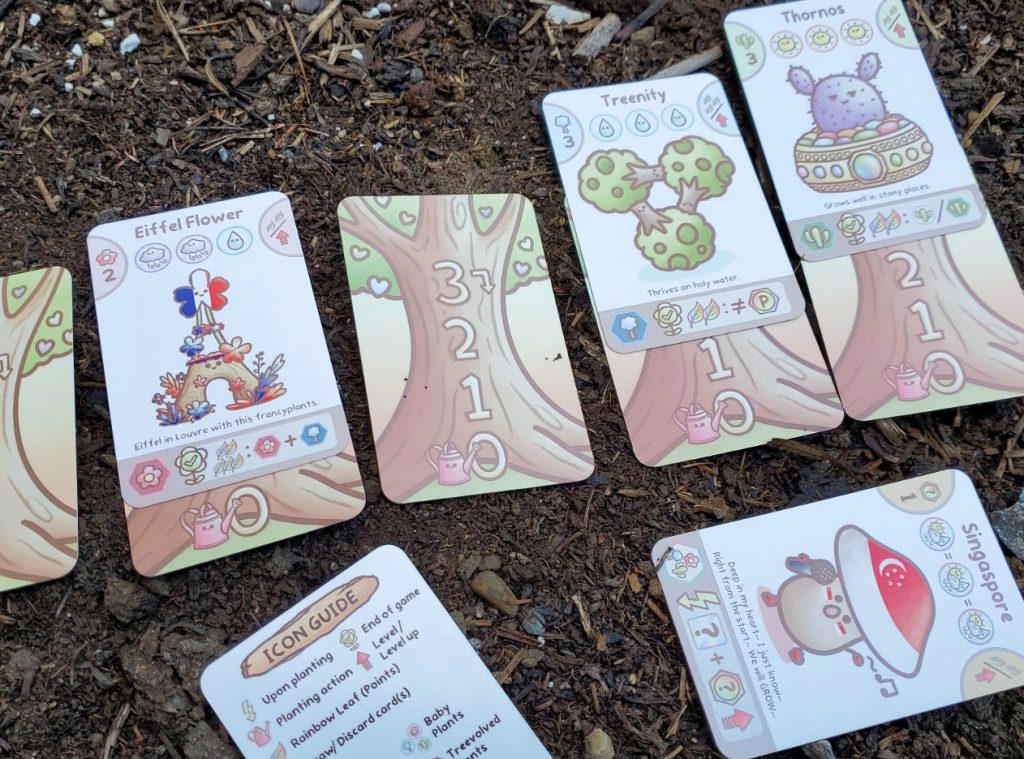
The Language of Plantopia
Perhaps the greatest temporary barrier to the enjoyment of Plantopia is in the symbolic language utilized throughout the game. Each time I’ve taught the game, multiple eyes glaze over at first sight of the sentences of symbols at the bottom of each card. Player guides and rulebooks do feature a breakdown of the iconic language, but the first play through will likely include the occasional furrowed brow and a journey along a learning curve from the toils of translation.
That being said, the language is consistent and, once learned, quite helpful in quickly determining the potential strategic benefit to any given plant.

Harvest Time
Plantopia is genuinely packed with charm. The foil box is inviting. The patterned linen finish on the plant cards adds a beautiful touch. The heavy foiled weather cards bring a sturdy feel amid all that flipping. The artwork is quirky and wonderful, and the puns are worth their weight in gold. There is no doubt the game is a visual treat.
Having played Plantopia multiple times at every player count, I believe the game plays best with five gardeners. Because of the simultaneous play, there is little difference in time between a two and five player game. At five, the weather decisions are fast and far more intriguing. If anything, the low player counts add fiddling, and precious minutes, by shuffling and dealing randomized weather cards. The randomized deck removes some of the surprise – and the gratuitous blame casting – for ill-conceived atmospheric conditions. The game’s most entertaining feature is the interactive tension of the weather phase.
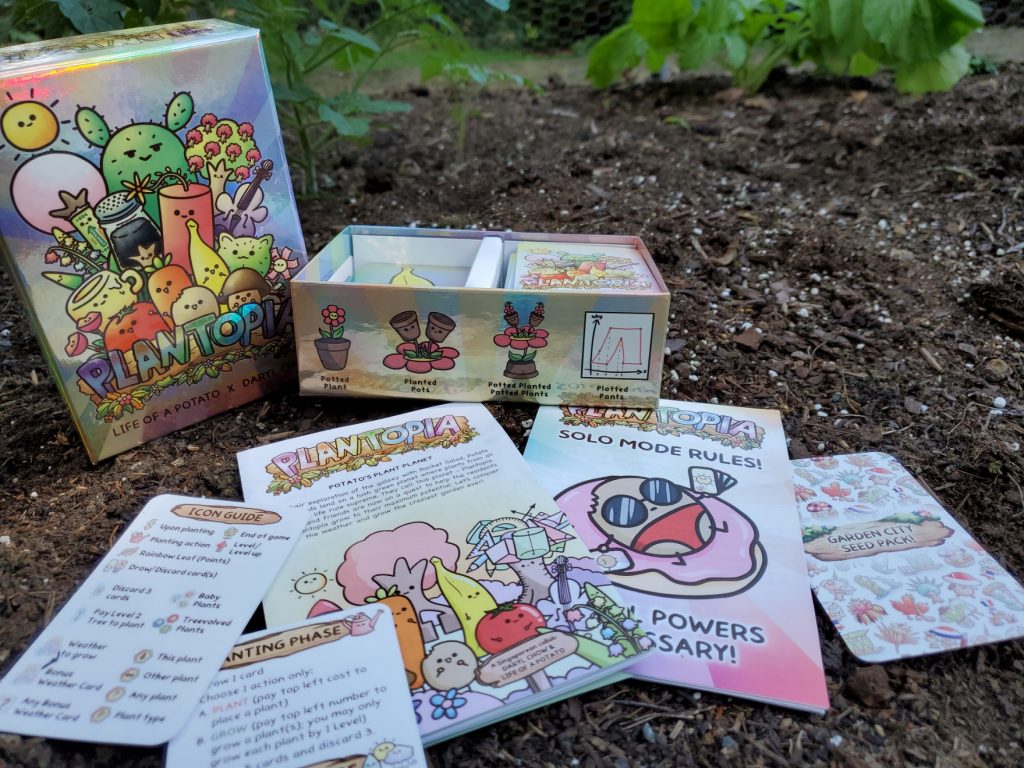
Tossing out the first go ‘round as a linguistic and strategic learning experience, Plantopia is a fun little family game. With so many available cards (especially if you snag the Kickstarter which includes the internationally flavored Garden City Seed Pack), the challenge is in recognizing what is possible as quickly as possible while simultaneously interpreting what every other player is trying to accomplish in order to capitalize on the information to advance your own cause. There is just enough player interaction to keep conversation lively while shifty eyes swim all around the table. As players plant their second and third treevolved plants, the game takes on a nervous tone, wondering who will trigger the endgame and when. When the bubble finally bursts, the fertilizer hits the fan and everything rolls downhill. All of this creates a solid twenty minute experience.
I’m not sure if the puns will get old. They haven’t yet for this dad, not by a long shot. We’ve uncovered several varied strategies thus far, which leads me to believe there is still a wealth of possibility in this shiny box, even if it lacks any true depth of strategy. If you’re looking for a unique experience and you’re willing to play a few games with an explorer’s heart, Plantopia might be the game you never knew you wanted.
(Disclaimer: No cards were harmed in the sowing and uprooting of these photos.)
One Year Later…
To date, I still don’t own a game like Plantopia. Both the evolution and weather mechanics are just as interesting as they were the day I first cracked open the shiny box. I’ve not found others have the same enthusiasm for it, especially the kiddos. I suspect the iconography (and particularly its role in the scoring system) is the greatest culprit. With all the symbolic confusion, the ending hits a bit of a wall, especially as the crowd at the table gets younger. However, over and against the mixed reactions, this quirky little card game still holds my heart and a spot in the collection. It’s hard to get a hold of Origame titles in the US to date, but they have a unique flavor that is worth checking out. Anyone want to play?


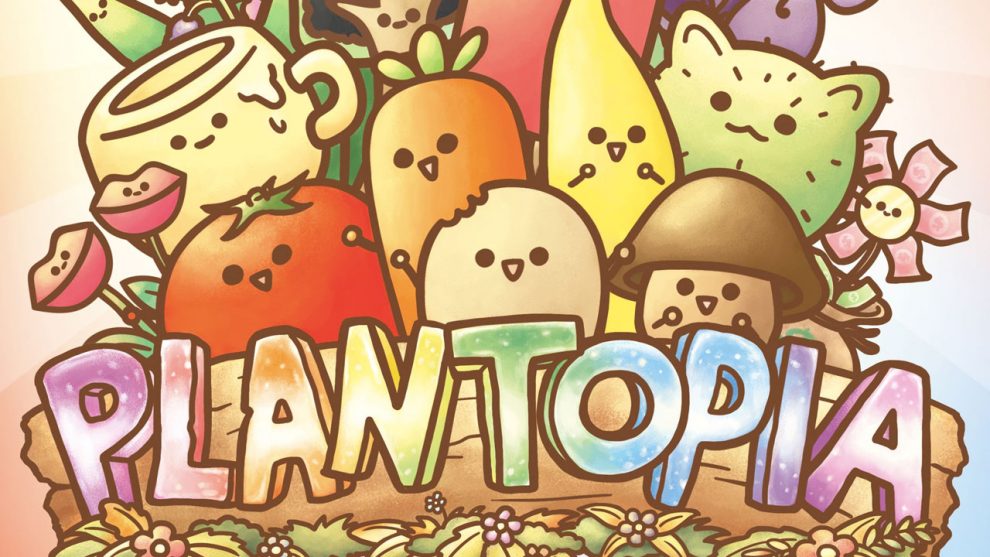








Add Comment